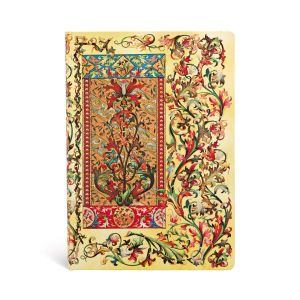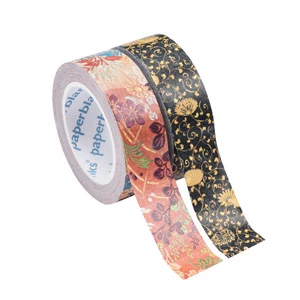We're experiencing high demand at the moment, which may cause slight delays in shipping. We're doing our best to get your order to you as soon as possible!
**Make sure to select your FREE gift at checkout**
**Make sure to select your FREE gift at checkout**
Product Specifications
Choose your favourite features:{{product.Format}} ({{product.WidthMM}}mm x {{product.HeightMM}}mm x {{product.DepthMM}}mm)
Create a Bundle
{{product.CategoryName}}
{{product.SeriesName}}
{{product.SelectedPrice | euro}} {{product.CurrencySymbol}} {{product.SelectedSalePrice | euro}} {{product.CurrencySymbol}}
{{product.CurrencySymbol}}{{product.SelectedPrice}} {{product.CurrencySymbol}}{{product.SelectedSalePrice | currency : ""}}
{{product.SelectedPrice | euro}} {{product.CurrencySymbol}}
{{product.CurrencySymbol}}{{product.SelectedPrice | currency : ""}}
{{bundleBookmark.CategoryName}}
{{bundleBookmark.SeriesName}}
{{bundleBookmark.SelectedPrice | euro}} {{bundleBookmark.CurrencySymbol}} {{bundleBookmark.SelectedSalePrice | euro}} {{bundleBookmark.CurrencySymbol}}
{{bundleBookmark.CurrencySymbol}}{{bundleBookmark.SelectedPrice}} {{bundleBookmark.CurrencySymbol}}{{bundleBookmark.SelectedSalePrice | currency : ""}}
{{bundleBookmark.SelectedPrice | euro}} {{bundleBookmark.CurrencySymbol}}
{{bundleBookmark.CurrencySymbol}}{{bundleBookmark.SelectedPrice | currency : ""}}
Total price:
{{(product.SelectedPrice + bundleBookmark.SelectedPrice) | euro}} {{product.CurrencySymbol}}
{{(product.SelectedSalePrice + bundleBookmark.SelectedPrice) | euro}} {{product.CurrencySymbol}}
Total price:
{{product.CurrencySymbol}}{{product.SelectedPrice + bundleBookmark.SelectedPrice}}
{{product.CurrencySymbol}}{{(product.SelectedSalePrice + bundleBookmark.SelectedPrice) | currency : ""}}
Total price: {{(product.SelectedPrice + bundleBookmark.SelectedPrice) | euro}} {{product.CurrencySymbol}}
Total price: {{product.CurrencySymbol}}{{(product.SelectedPrice + bundleBookmark.SelectedPrice) | currency : ""}}
Payment will be processed immediately at the time of checkout. Pre-ordered items cannot be combined with regular items and will be shipped as soon as they are available.
Create a Bundle
{{product.CategoryName}}
{{product.SeriesName}}
{{product.SelectedPrice | euro}} {{product.CurrencySymbol}} {{product.SelectedSalePrice | euro}} {{product.CurrencySymbol}}
{{product.CurrencySymbol}}{{product.SelectedPrice}} {{product.CurrencySymbol}}{{product.SelectedSalePrice | currency : ""}}
{{product.SelectedPrice | euro}} {{product.CurrencySymbol}}
{{product.CurrencySymbol}}{{product.SelectedPrice | currency : ""}}
{{bundleBookmark.CategoryName}}
{{bundleBookmark.SeriesName}}
{{bundleBookmark.SelectedPrice | euro}} {{bundleBookmark.CurrencySymbol}} {{bundleBookmark.SelectedSalePrice | euro}} {{bundleBookmark.CurrencySymbol}}
{{bundleBookmark.CurrencySymbol}}{{bundleBookmark.SelectedPrice}} {{bundleBookmark.CurrencySymbol}}{{bundleBookmark.SelectedSalePrice | currency : ""}}
{{bundleBookmark.SelectedPrice | euro}} {{bundleBookmark.CurrencySymbol}}
{{bundleBookmark.CurrencySymbol}}{{bundleBookmark.SelectedPrice | currency : ""}}
Total price:
{{(product.SelectedPrice + bundleBookmark.SelectedPrice) | euro}} {{product.CurrencySymbol}}
{{(product.SelectedSalePrice + bundleBookmark.SelectedPrice) | euro}} {{product.CurrencySymbol}}
Total price:
{{product.CurrencySymbol}}{{product.SelectedPrice + bundleBookmark.SelectedPrice}}
{{product.CurrencySymbol}}{{(product.SelectedSalePrice + bundleBookmark.SelectedPrice) | currency : ""}}
Total price: {{(product.SelectedPrice + bundleBookmark.SelectedPrice) | euro}} {{product.CurrencySymbol}}
Total price: {{product.CurrencySymbol}}{{(product.SelectedPrice + bundleBookmark.SelectedPrice) | currency : ""}}
Payment will be processed immediately at the time of checkout.
The estimated shipping date is Fall 2025 - While stock lasts. Pre-ordered items cannot be combined with regular items and will be shipped as soon as they are available.
Create a Bundle
{{product.CategoryName}}
{{product.SeriesName}}
{{product.SelectedPrice | euro}} {{product.CurrencySymbol}} {{product.SelectedSalePrice | euro}} {{product.CurrencySymbol}}
{{product.CurrencySymbol}}{{product.SelectedPrice}} {{product.CurrencySymbol}}{{product.SelectedSalePrice | currency : ""}}
{{product.SelectedPrice | euro}} {{product.CurrencySymbol}}
{{product.CurrencySymbol}}{{product.SelectedPrice | currency : ""}}
{{bundleBookmark.CategoryName}}
{{bundleBookmark.SeriesName}}
{{bundleBookmark.SelectedPrice | euro}} {{bundleBookmark.CurrencySymbol}} {{bundleBookmark.SelectedSalePrice | euro}} {{bundleBookmark.CurrencySymbol}}
{{bundleBookmark.CurrencySymbol}}{{bundleBookmark.SelectedPrice}} {{bundleBookmark.CurrencySymbol}}{{bundleBookmark.SelectedSalePrice | currency : ""}}
{{bundleBookmark.SelectedPrice | euro}} {{bundleBookmark.CurrencySymbol}}
{{bundleBookmark.CurrencySymbol}}{{bundleBookmark.SelectedPrice | currency : ""}}
{{bundlePencilCase.CategoryName}}
{{bundlePencilCase.SeriesName}}
{{bundlePencilCase.SelectedPrice | euro}} {{bundlePencilCase.CurrencySymbol}} {{bundlePencilCase.SelectedSalePrice | euro}} {{bundlePencilCase.CurrencySymbol}}
{{bundlePencilCase.CurrencySymbol}}{{bundlePencilCase.SelectedPrice}} {{bundlePencilCase.CurrencySymbol}}{{bundlePencilCase.SelectedSalePrice | currency : ""}}
{{bundlePencilCase.SelectedPrice | euro}} {{bundlePencilCase.CurrencySymbol}}
{{bundlePencilCase.CurrencySymbol}}{{bundlePencilCase.SelectedPrice | currency : ""}}
Total price:
{{(product.SelectedPrice + bundleBookmark.SelectedPrice + bundlePencilCase.SelectedPrice) | euro}} {{product.CurrencySymbol}}
{{(product.SelectedSalePrice + bundleBookmark.SelectedPrice + bundlePencilCase.SelectedPrice) | euro}} {{product.CurrencySymbol}}
Total price:
{{product.CurrencySymbol}}{{product.SelectedPrice + bundleBookmark.SelectedPrice + bundlePencilCase.SelectedPrice}}
{{product.CurrencySymbol}}{{(product.SelectedSalePrice + bundleBookmark.SelectedPrice + bundlePencilCase.SelectedPrice) | currency : ""}}
Total price: {{(product.SelectedPrice + bundleBookmark.SelectedPrice + bundlePencilCase.SelectedPrice) | euro}} {{product.CurrencySymbol}}
Total price: {{product.CurrencySymbol}}{{(product.SelectedPrice + bundleBookmark.SelectedPrice + bundlePencilCase.SelectedPrice) | currency : ""}}
Payment will be processed at the time of checkout. Pre-ordered items cannot be combined with regular items and will be shipped as soon as they are available.
Product Information
| Format |
{{product.Format}}
|
|||
|---|---|---|---|---|
|
|
||||
| Size |
Width: {{product.WidthMM}}mm ({{product.WidthInch}}")
Height: {{product.HeightMM}}mm ({{product.HeightInch}}") Depth: {{product.DepthMM}}mm ({{product.DepthInch}}")
Garment Tolerance Note: While we do our best to adhere to the measurements specified, please allow for small variations of up to one inch or 25mm due to the nature of the fabric.
|
|||
| Interior Language | North American German English (International Holidays) French English (UK and Ireland Holidays) Italian Japanese Spanish Dutch North American German English (International Holidays) French English (UK and Ireland Holidays) Italian Japanese Spanish Dutch | |||
| Interior | {{product.Interior}} | N/A | ||
| Space between lines | {{product.SpaceBetweenLines.toFixed(2)}}mm | N/A | ||
| Lines Per Page | {{product.InteriorLinesPerPage}} | N/A | ||
| Date Range | {{product.DPBeginMonth}} {{product.DPYear}} - {{product.DPEndMonth}} {{product.DPYearEnd}} | |||
| Page Count | {{product.PageCount}} Pages | |||
| Closure | {{product.Closure}} | |||
| Colour | Multi-colour | |||
| GSM (paper weight) | {{product.GSM}} | |||
| Cover | Hardcover | Softcover | ||
| Edge Printing |
Yes
No
|
|||
| Binding Type |
{{product.BindingName}}
|
|||
| Pouch Type |
{{product.PouchName}}
|
|||
| Interior Paper |
{{product.TextPaperName}}
|
|||
| Ribbon Markers. | Flexi Page Markers |
{{productRibbonCount}}
|
||
| More Features |
|
|||
| FAQ |
|
|||
| Materials |
|
|||







